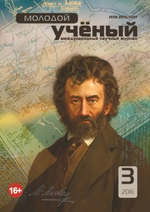Today you can find them on the street corner, at airports, in front of bank and next to bus stop CCTV cameras are literally everywhere in the Uzbekistan. So often CCTV is seen as a security tool. Well of course it is, however it also plays equally important roles in the areas of monitoring and control In the literature on the operation and effects of closed-circuit television (CCTV), attention has focused on the roles of human actors in surveillance practices. Though most of our attention these days is focused on the transition to IP video technology, it's important to note that analog CCTV security cameras can still be highly effective for many surveillance applications, especially those on a budget. With traditional CCTV security cameras, the video signal is processed and transmitted in analog format for local viewing from one central monitoring location. But that doesn't mean you can't use analog cameras in an IP-based surveillance
Introduction
In its truest form, a CCTV camera is an analog video camera that transmits signals via coaxial cable to a single central location for monitoring, recording, and video analysis. While the recent trend is a push towards IP network cameras, CCTV cameras are still widely used, and offer a cost-effective answer to many common surveillance scenarios. CCTV technology has been around since the 1940's, and became a major player in the security industry around 1970. The technology is tried and true, and there are CCTV security camera models for virtually any surveillance application. The two main categories of CCTV cameras are fixed cameras and pan/tilt/zoom models which can rotate horizontally and vertically to cover more area.
Components of a CCTV Video Surveillance System
There's a lot that goes into a typical CCTV video surveillance system. While the cameras get most of the attention in the beginning, you also have other concerns, such as viewing, recording, and archiving the video footage, and the equipment required for carrying out those tasks. Here's a look at the basic components of a typical CCTV system.
Cameras
Security cameras are the starting point for most CCTV video surveillance systems. There are endless possibilities when choosing CCTV cameras and lenses — everything from fixed models designed for monitoring very specific locations, to day/night cameras, and powerful PTZ domes for patrolling large areas.
Monitor
In a traditional CCTV security camera setup, operators view footage from a central location on a monitor very much like a TV, but with higher lines of resolution for better picture quality. Monitors can be dedicated (meaning they display video from a single camera), or call-up (meaning operators can access multiple cameras at the same time).
Cable
With an analog system, coaxial cable is required for transmitting video footage from the CCTV security cameras. This is one of the drawbacks of analog CCTV video surveillance, as the cable can be expensive and difficult to install, especially for larger camera networks, and those were cameras must be positioned in difficult locations.
DVR
Most modern CCTV video surveillance systems incorporate DVRs (digital video recorders) which enable operators to reap some of the benefits of a network-based surveillance setup. DVRs convert the analog footage to digital, which helps to extend storage capacity, makes it much easier to search archived footage, and also allows users to stream video over a network for remote viewing from multiple locations.
CCTV Security Camera Types
Fixed CCTV surveillance cameras
Fixed security cameras point in a single direction, which makes them perfect for monitoring very specific areas of interest. They're also preferred for applications where it's beneficial to install cameras in clearly visible locations. For this reason, fixed CCTV surveillance cameras are quite effective not only for capturing footage of suspicious activity, but also for deterring criminals and vandals from carrying out their acts in the first place. The direction of the camera is set during installation. Many security cameras also accept interchangeable lenses and housings, so you have the flexibility to meet a wide variety of surveillance needs.
PTZ
PTZ cameras are ideal for wide-area surveillance. They give operators the ability to remotely control pan, tilt, and zoom functions to follow activity and to zoom in for detailed monitoring. This is an area where analog CCTV security cameras fall behind their IP camera counterparts. With IP cameras, the pan/tilt/zoom functions are controlled manually or automatically and delivered over a single network cable, while analog cameras require additional wiring to perform similar functionality.
Conclusions
The main purpose of this paper was to find out the role of CCTV cameras on public safety. The effectiveness of CCTV has traditionally been evaluated in terms of its impact on crime. Nevertheless, there is some evidence to suggest that CCTV may increase public feelings of safety, although, overall the reality of this issue is not yet clear due to conflicting findings. The simple fact is that CCTV camera can help prevent crimes and also solve them. Small businesses use the cameras to deter criminal from breaking in. There is an argument to be made however, that if CCTV is in fact successful in making people feel safer, then it is in this sense effective, regardless of any actual impact it has on crime.
References:
- Joe Cieszynski-Closed Circuit Television second edition-2004year
- Herman Kruegle and Frank AbramCCTV Surveillance (Second Edition)
- Charlie Pierce-The Professional's Guide to CCTV-202year







